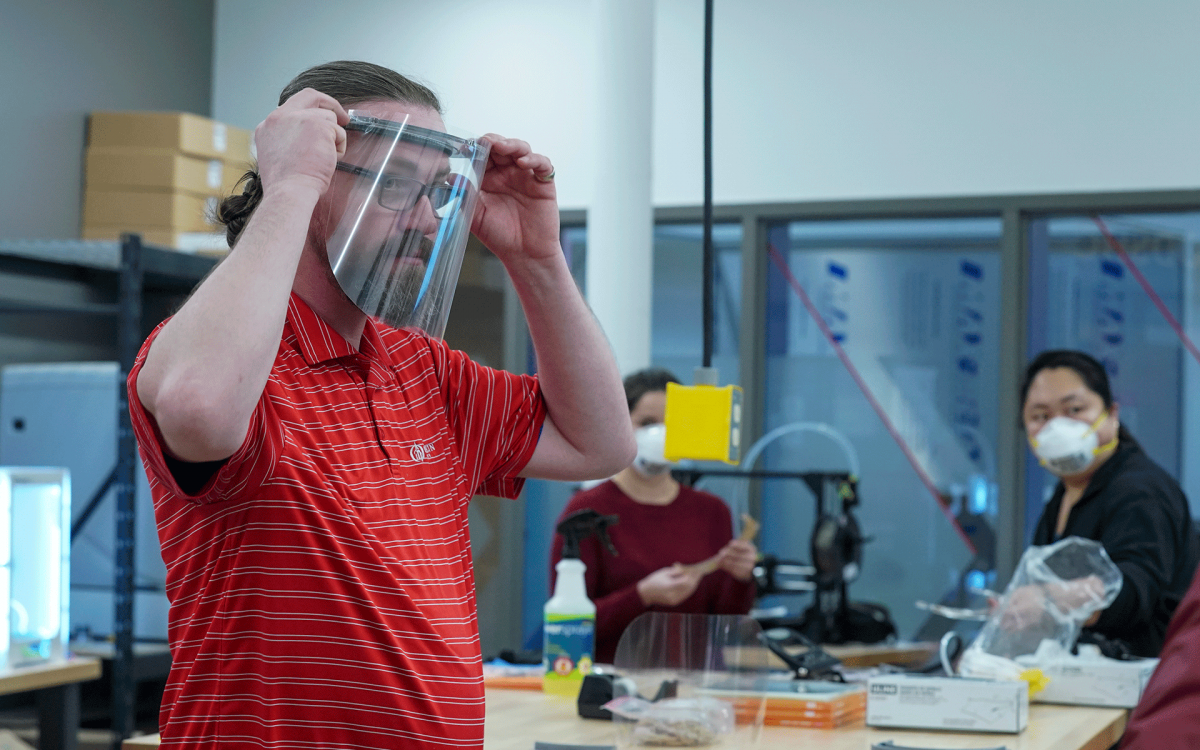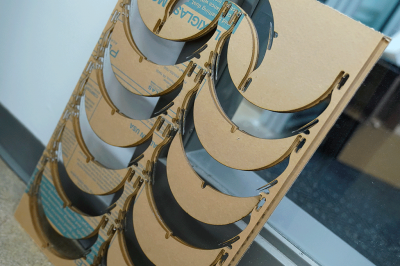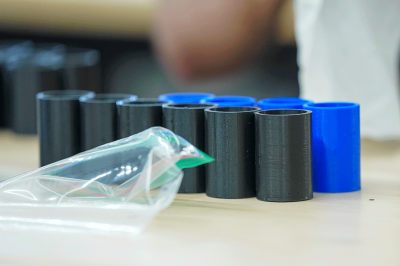Building PPE to Protect our Community
Students and University leaders working to help the greater community is nothing new to Otterbein. When a small team of students rallied together with The Point staff to build personal protective equipment (PPE) in preparation for an anticipated central Ohio outbreak of COVID-19, no one was surprised. According to Erin Bender, executive director of The Point, “it’s just the Otterbein way.”
Making the PPE.
Running the laser engraver.
“When we found out there was a need in the community, the first thing that the students and our lab manager asked was, ’How can we help?’” Bender said that even as the University was shifting to working from home, the team realized that the tools and equipment at The Point’s Maker Space could be valuable in helping. “As the situation continued to unveil itself, we were looking on blogs, we were looking to some of our corporate partners, we were looking to our healthcare institutions — and we were talking to them on a regular basis to learn what they needed and how we could help them.”
Bender said that the collaborative approach informed better decisions and a better strategy. “Rather than just making this or that, we went to our partners and said, for example, ’OhioHealth — how can we best support you? Here are the tools and things we have.’”
The community partners responded with their needs and asked if Otterbein could help. So Otterbein got to work.
Bender said that as the situation was unfolding, some companies were making free designs for PPE available. The team tried a few and found they weren’t good. Curtis Smith, the operations manager of the Maker Space and labs at The Point, had a source in Australia. They connected and Otterbein’s team started to hone in on a design to start 3-D printing protective face shields. Soon after, one of the engineering students also came up with a great design to use laser printer technology to create even more face shields.
“We have five students working on this project,” Smith said. “Their majors range from engineering to education and we have some graduate assistants as well.”
Smith said the team is taking precautions and that he’s keeping contact limited to just two people per shift to keep students safe.
Bender and Smith report that as of May 11, the team has made more than 400 face shields that are already in use with the supplies to make 1,000. “If there are other organizations that need a face shield protector, we’re happy to do that,” Bender said.
The Point-produced PPE has been donated to community partners including St. Ann’s Hospital, Westerville City Police and EMS, Friendship Village of Columbus, Heartland of Westerville, OhioHealth, DASCO home healthcare providers and Otterbein’s own facilities team and janitorial services crew.
Printing 3D models
Bushings
Student at the laser engraver
But Otterbein’s help doesn’t stop there. The team at The Point is also making 3-D printed bushings for OhioHealth. Bender explained that this small piece means a critical piece of equipment can be kept outside of a patient’s room. This gives nurses and doctors immediate monitoring of ventilator operations without having to be completely dressed in PPE to go inside the room every time. Otterbein has made almost 300 of those pieces as of May 1.
Bender said the team was also asked to pre-emptively produce a component that would give hospitals the ability to split ventilators to serve more patients if needed. Otterbein’s team also recently started making ear-saving straps to alleviate discomfort by those wearing masks for long stretches of time.
Bender said The Point’s organizing principles enabled them to mobilize rapidly. “The Point’s nimbleness means that when we get a call from somebody who needs something, we can immediately discuss what we can do, how much it might cost to make, and what materials it might take.”
However, she says The Point’s real advantage comes from another source. “It’s the ingenuity of the students that separates us from a lot of places around town. In just a few hours our students will come up with something that’s better. They want to give back. Otterbein people don’t think about themselves first, we think about how we can provide for our partners.”
Beyond the power of this crisis learning experience, Bender says this work is something they will all remember. “I think everyone feels like they’ve been able to contribute in a bigger way. The small pieces we can contribute are a piece that someone puts on every day as their armor during this pandemic. To know that we’ve been a part of that makes us feel good.”
Making the PPE.
Making the PPE.














